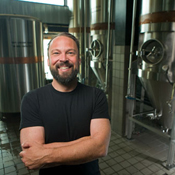Where Are They Now?
Category: WebExtras
When we caught up with Roy H. Grabman, B.S. ’67, to find out where life had led him after graduating from the University of Baltimore (and its then-nascent Glee Club), he gleefully gave us more details on his experiences at UB and on his subsequent career.
On life before UB:
My father worked for various feed and grain companies and farmers’ cooperatives. His profession required frequent job transfers. During my childhood, we lived in approximately eight different locations in Pennsylvania, Ohio and western New York state.
After graduation from Dansville High School, in Dansville, N.Y., I earned an associate of arts degree in business administration from the local community college.
On being well rounded:
Most of my courses were in transportation management, but I also took courses in psychology, sociology, second-year accounting, economics, history and political science.
Due to changes in the field of logistics and the deregulation of the transportation industry, most of these courses are now obsolete and probably no longer offered.
On UB, back then:
Most classes were taught in the main building on North Charles Street. They had just finished the library. Most of the students were from Baltimore and the immediate area.
I lived in a rented room in a private home on North Guilford Avenue. Since I did not have a car, I used the city buses as transportation to and from class. I also used to walk back to my room after class on nice afternoons.
On making the cut:
Since the Glee Club was being established from scratch, I don’t recall being asked to audition. I think they were willing to take anyone who thought they could sing and then weed out those who could not.
On his current employer, Halliburton:
Halliburton is one of the pre-eminent worldwide suppliers of field services to producers of oil and natural gas. Customers are found in most areas where oil and natural gas are produced. Major areas of activity in the United States include the Marcellus Shale in Pennsylvania, the Bakken field in North Dakota and various other production fields in Texas, Louisiana, Oklahoma, California, Alaska and the Rockies.





